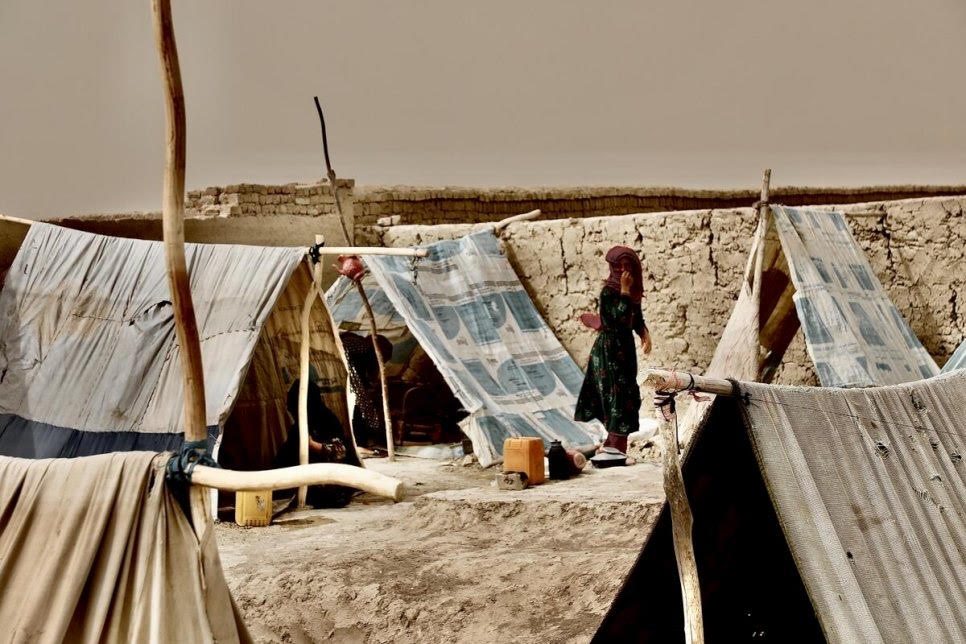Recent protests on the Cuban island filled Western newspapers in July, including a cacophony of calls for regime change and further intervention in the socialist-led nation. Thousands took to the streets in cities across Cuba in the largest protest to have taken place since the fall of the Soviet Union, certainly the largest show of dissidence since President Díaz-Canel took power April 19th, 2018. The less covered and oft-downplayed counter-protests saw at least tens of thousands of participants, however, with the government even saying that numbers reached over 100,000 marching in support of the revolutionary government.
The protests initially broke out on July 11th and lasted for about a week’s time before petering out as the initial fervor faded. The concerns of the protestors varied, with some in the streets due to the government’s coronavirus response, lack of vaccines, an ailing economy, and disillusionment among younger Cubans. All of which are extremely valid concerns as the virus continues to rage around the globe, and while economies continue to struggle with emerging from the ever-continuing pandemic. While many of the complaints are valid, and the necessitation of the right to protest must be guaranteed, some protestors were clamoring for something that has only had disastrous effects: American military intervention and regime change. Cuban Americans in Florida have been at the vanguard of calls for President Biden to invade the Caribbean Island, on a humanitarian and regime change basis.
If history would serve correct, as it often does, American military intervention in Cuba would be disastrous to say the least. The consequences of the recent departure from Afghanistan by American and allied forces should be a clear indicator of what would become of another regime change and occupation campaign. The American role in Cuban affairs is and has historically been over-pronounced, beginning with the US occupying the nation following its defeat of the Spanish alongside Cuban rebels in the Spanish-American War (also known as the Cuban War of Independence).
Read More on Afghanistan HERE
The Americans would go on to invade Cuba four additional times following May 20th, 1902, when the US officially announced the end of its military occupation of the island and Cuba declared independence. The justification of the interventions varied from protecting American business in the sugarcane industry, to crushing an Afro-Cuban led revolt, as well as invading to defeat leftist insurgents although the Cuban government repeatedly declared it would handle the situation. All three situations utilized the enshrinement of the Platt Amendment in the Cuban Constitution, virtually making Cuba a protectorate of the US rather than a fully independent nation. The language of the amendment gave the US a massive amount of discretion in its enaction. Specifically, Article III required the government of Cuba consent to the right of the United States, while also allowing the US to construct what would become known as Guantanamo Bay. Not until 1934, in accordance with his “Good Neighbor Policy”, did President Roosevelt repeal the Platt Amendment, ending the repeated involvement of the US military in Cuba since 1898.
Since the rescinding of the Platt Amendment the United States relations with Cuba have fluctuated extremely: from openly working with elected officials, to supporting strongmen, assisting coup d’états, and ultimately attempting a CIA-led invasion, followed by decades of crippling sanctions. The events of the 1950’s and 60’s have been extremely influential on the relations of the two nation’s beginning first with the seizure of power by General Fulgencio Batista in March of 1952.
General Batista had already led a prior coup in 1933, toppling a provisional government which had replaced Dictator Gerardo Machado. In this revolt Batista amassed a cult of personality and rose to one of the most powerful men in Cuba, leading the nation through several puppet presidents and institutions until being elected President in 1940. Following the end of Batista’s term, he then traveled abroad and lived in the United States, investing huge sums of money he had amassed through his monopoly on political power in Cuba from 1933-1944. Batista would then find the need to return to Cuba under perceived rise in corruption and collapse of public works, running for president in the 1952 elections that were to take place in June.

Batista, though, was not as popular among the Cuban people as he had calculated, and all indications pointed to Batista losing the 1952 elections. Prior to his defeat materializing Batista took decisive military action against the elected government of President Carlos Prío Socarras, who ironically had participated in Batista’s previous coup in 1933. Three months before the elections were to take place in March, Batista, with support of the armed forces, took over the Presidential Palace as well Havana proper in effect ousting the elected government.
While having constructed the 1940 Constitution, which by all measures was a progressive document, Batista didn’t return to its promises but instead reneged on all previously progressive positions and grew increasingly conservative in ideology and authoritarian in practice. During his 1950’s rule, Batista was incredibly corrupt, inviting American Mobsters onto the Island to run its casinos and embezzling funds from Congress, amassing a huge fortune with everyday Cubans footing the bill. Batista would then rule with the backing of the United States until being overthrown via popular revolution led by Fidel and Raul Castro alongside Che Guevara in early January of 1959.

Che Guevara, Raul Castro, and Fidel Castro
The turn of the decade─and ruling powers in Cuba─marked the greatest shift in American policy, as for years it had been one of either controlling the island or backing various political leaders, with Castro’s ascendence turning the US position to downright hostility. The ideology of the Marxist-Leninist revolutionaries was arguably the nail in the coffin for US-Cuba relations; as the latter became closer with the Soviet Union, the US grew increasingly hostile with the island. On January 3, 1961, citing “unwarranted action by the Government of Cuba that placed crippling limitations” regarding the ability for the Embassy to function, the US government officially closed its embassy in Cuba.
Shortly before closing the embassy, on October 19th, 1960, President Eisenhower authorized the partial embargo which would be the initial step toward the blockade we know today. That step to the embargo of today was made less than 18 months later on February 3, 1962, following the failed Bay of Pigs invasion, President Kennedy signed Proclamation 3447, which declared an embargo on all trade between the US and Cuba. The embargo would be strengthened a year later with the Cuban Assets Control Regulations, an economic sanction that forbade financial transactions with Cuba, cutting off Cuba from all American business and banking institutions.
Following a thaw in the 70’s under the Carter Administration, the US returned to its hardline stance under the George H.W. Bush and Clinton Administrations in the 90’s passing both the Cuban Democracy Act (1992) and the Cuban Liberty and Democratic Solidarity Act of 1996. The bills further prohibited US business dealings with Cuba, extending the ban to foreign subsidiaries of US companies, restricted remittances, and allowed sanctions against companies that invested in formerly American owned property, seized as a result of the nationalizing of Cuba’s resources and land. President George W. Bush further increased sanctions and their penalties which would largely stay in place until the re-establishing of relations under the Obama Administration.

Under the Obama Administration, Cuba-US relations were the warmest since the Castro’s came to power following the toppling of the Batista regime. The pair of countries re-opened their respective embassies, while under Obama the US alleviated some of the sanctions concerning financial transactions, travel to the island, and official trade between the nations. Even with this much progress toward normalization having been made, most if not all has been lost as the Trump administration rushed to reimpose sanctions Obama had rolled back, as well as imposing additional sanctions while additionally listing Cuba as a sponsor of Terrorism – joining Iran, Syria, and North Korea.
All this history of US involvement in Cuban affairs along with the turbulent relationship between the two nations brings us back to the recent protests we have seen. Thousands of people took to the streets protesting food and medicine shortages, the handling of COVID, as well as police brutality and political freedoms. Each are more than valid reasons to protest, and such problems should be met immediately by the Cuban government. On the international stage the Cuban government has been met with widespread condemnation on the use of police and security forces to disperse protestors, as well as the arrest and detention of some protestors. To date, upwards of 700 people have been detained by the government for their role in the protests, which government officials often label as riots. While it isn’t a positive development in Cuba, it would serve the US government, international community, and media class to recall just one year ago the protests that rocked the US from coast to coast, north to south, for months.

In those protests, which were in response to an extrajudicial killing of an unarmed Black man by US Police Forces, millions, not thousands, took the streets demanding at the very least a reformation of police forces and at the most complete restructuring of power and redistribution of wealth in the nation. Of those protesting, which were also often labeled riots by government officials, over 10,000 people were arrested in the first weeks alone, while those not arrested were met with tear gas, steel-rubber coated bullets, and baton charges. Journalists were fired upon with tear gas and rubber bullets, including a reporter struck while on air, as well as another being arrested on live TV. Such a comparatively harsher response to valid protests against governmental action should be expected as a scene unique to oppressive regimes… although it was (and is) the status quo in the United States.


In remembering our own mass protests, and the government’s response, it seems hypocritical at best and malevolent at worst for the US to respond in such a hostile manner. President Biden issued additional sanctions on Cuba, on top of the Trump-era sanctions the President promised to rescind on the campaign trail. If our President truly wanted to aid the people of Cuba he wouldn’t have levied additional sanctions against the government, sanctions of which were designed with isolation, suffering, and regime change in mind rather than anything else. The State Department’s own documents outlined the early strategy of the US toward Cuba which would become the status quo:
“If the above are accepted or cannot be successfully countered (points detailing Castro’s and Communist influence and popularity), it follows that every possible means should be undertaken promptly to weaken the economic life of Cuba. If such a policy is adopted, it should be the result of a positive decision which would call forth a line of action which, while as adroit and inconspicuous as possible, makes the greatest inroads in denying money and supplies to Cuba, to decrease monetary and real wages, to bring about hunger, desperation, and overthrow of government”
Memorandum From the Deputy Assistant Secretary of State for Inter-American Affairs (Mallory) to the Assistant Secretary of State for Inter-American Affairs (Rubottom)
Washington, April 6, 1960.
Considering the historical positions of the United States, its own documents, and the continuity of strategy across the Trump-Biden presidencies, I find it hard to believe the United States has a moral and political upper hand with Cuba as the former often postures. That sentiment was borne out in the international community in a recent UN vote that blasted the continued embargo of Cuba with the General Assembly voting 184 in favor of a resolution condemning the blockade. Only two nations voted against, predictably the United States and its hardline ally Israel, after voting with the US in 2019. Brazil chose to abstain from the vote, as did US allies Colombia and Ukraine. This rendition of the resolution calling for an end to the embargo has now been passed by the UNGA 29 times since 1992.
To truly help the Cuban people, the United States must come into compliance with the vast majority of the world, as well as its allies, and end the embargo of Cuba while rescinding relevant sanctions. The “economic warfare,” as the Cuban foreign minister puts it, has no place in American diplomatic efforts. They haven’t worked in most cases─Cuba, Iran, North Korea, and Venezuela─where they’ve all been employed to enact regime change. The reality on the ground is that these measures hit the people the US claims to want to help the hardest. It’s time for the US to end the embargo, render aid to Cubans in need following normalization, and then diplomatic efforts can proceed. Historically, as ties have warmed, so has the Cuban Government often softened its stance. In 2021, after all the suffering we’ve seen in this pandemic, we must do the objectively correct thing and end Cuba’s isolation, for it’s their suffering that our diplomatic polices exacerbate.



















